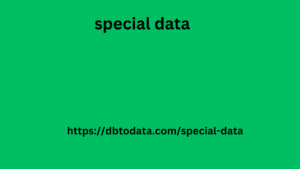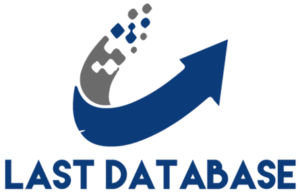The role of cognitive biases in digital marketing – part Digital Marketing The role of cognitive biases in digital marketing – part 2 authorNexa dateAugust 01, 2024 Using cognitive biases for digital marketing success Grasping consumer behavior in digital marketing parallels comprehending human nature itself. As we discussed in our previous blog, human nature means customers’ cognitive biases will determine how and what kind of marketing they respond
to. Knowing these tendencies will help you create
campaigns that have more impact and more success. Here, we will look at the practical applications digital marketers can use to leverage 7 cognitive biases. The anchor effect The anchor effect is based on the idea that people make decisions based on the first piece of information they see. Digital marketers can use this to influence customer behavior in two ways: pricing strategies and discount promotions. Pricing strategies: Displaying a higher-priced item first
makes the subsequent prices look more reasonable. For example, if a high-end product is AED500 and the next product is AED300, the latter looks like a bargain. Discount promotions: Showing the original price before the discounted price, e.g. “Was AED100, now only AED70!” makes the discount more
appealing. Example: A fashion retailer lists a luxury
handbag for $1,200 at the top of the page. Below that they feature a similar handbag for $600. The second handbag looks like a great deal compared to the first, driving sales. The scarcity principle The scarcity principle states that people place a higher value on things that are perceived to be scarce. This bias creates urgency and encourages quicker decisions. Limited time offers: Use phrases like “Limited Time Only” or “Only a Few Left” to create urgency. Exclusive access: Offering exclusive deals to a select group of customers or for a limited time
adds to the perceived value. Example: An online travel agency promotes a “Flash Sale: Only 5 Seats Left at This Price!” on a popular route. The urgency drives bookings as customers don’t want to miss out. Social proof Social proof is the tendency for people to conform to the actions of others, assuming those
actions are correct. This bias is powerful in digital marketing,
where customer reviews and testimonials can influence buying decisions. Customer reviews and ratings: Displaying positive customer reviews and high ratings builds credibility and trust. Testimonials and case studies: Showcasing success stories from happy customers will persuade new prospects to buy. Example: A software company features testimonials from well known clients and displays a “4.8 out of 5 stars” rating on their landing page. Prospects see these endorsements and feel more confident to buy. Confirmation bias Confirmation bias is the tendency to look for, interpret, and remember information that confirms one’s existing beliefs. In marketing, you can use this by aligning your messaging with the existing beliefs and desires of your
target market. Targeted content: Create content that resonates with your audience’s existing beliefs and values. Personalized marketing: Use data to tailor messages that reinforce what your customers already believe or desire. Example: A fitness brand knows its audience values healthy living and self-improvement. Their marketing campaigns feature stories of personal transformation and scientific
benefits of their products, which align with the audience’s
beliefs and reinforce their commitment to the brand. Loss aversion Loss aversion is the human preference for avoiding losses over acquiring equivalent gains. People are more motivated by the fear of losing something than the prospect of gaining something of equal value. Risk of missing out: Highlight the losses if the customer doesn’t act. For example, “Don’t miss out on this offer!” Guarantees and warranties: Offering money-back guarantees reduces the
perceived risk of loss and can increase conversions. Example: An insurance company emphasizes the financial security and peace of mind customers will lose if they don’t buy their insurance plan. By focusing on the loss they motivate customers to buy coverage. The bandwagon effect The bandwagon effect is the tendency for people to adopt certain behaviors, styles or attitudes because others are doing so. This social influence can be used to build momentum and drive the adoption of products or services.
Popularity indicators: Show how many people have bought
or are using a product. For example, “Join over 10,000 customers!” Trending products: Highlight products that are popular or trending to tap into the desire to be part of the crowd. Example: A new app promotes itself by saying, “Over 1 million downloads!” This big number encourages more people to download the app as they don’t want to be left out of something so popular. Authority bias Authority bias is the tendency to attribute more accuracy to the opinion of an authority figure (unrelated to the content) and be more influenced by that opinion. In
marketing, you should use authority figures to
end credibility to your brand. Exper gcash phone number ndorsements: Use endorsements from industry experts or influencers. Certifications and awards: Display any relevant certifications, awards, or recognition prominently. Example: A skincare brand partners with a well-
known dermatologist who endorses their products. They also running a blog is not just about content marketing display certifications and awards from reputable institutions to boost customer confidence in their products. Tips for using cognitive biases in marketing campaigns Know your audience: Tailor your strategies to the specific biases and preferences of your target market. Use data analytics to get insights into their behavior. Combine biases: Don’t use just one cognitive bias. Combine multiple biases for a more robust strategy. For example, scarcity and
social proof can be used to create a sense of urgency and trust.
A/B testing: Continuously test different snbd host approaches to see which biases work best with your audience. A/B testing will help you refine your strategies for maximum impact. Ethical considerations: While using cognitive biases can be effective, it’s important to use them ethically. Make sure your campaigns are honest and transparent to maintain customer trust. Conclusion Using and leveraging cognitive biases can supercharge your digital marketing. By incorporating strategies that use the anchor effect, scarcity principle, social proof,
confirmation bias, loss aversion, Bandwagon Effect, and Authority
Bias, you can create more persuasive and successful campaigns. Always consider the ethical implications and build real trust with your audience. Grasping the nuances of cognitive biases and their influence on consumer behavior is essential for an effective digital marketing strategy. At Nexa, we harness these psychological insights to design impactful, audience-specific campaigns that deliver results. Collaborate with us to revolutionize your marketing strategy and propel your business to new heights.







